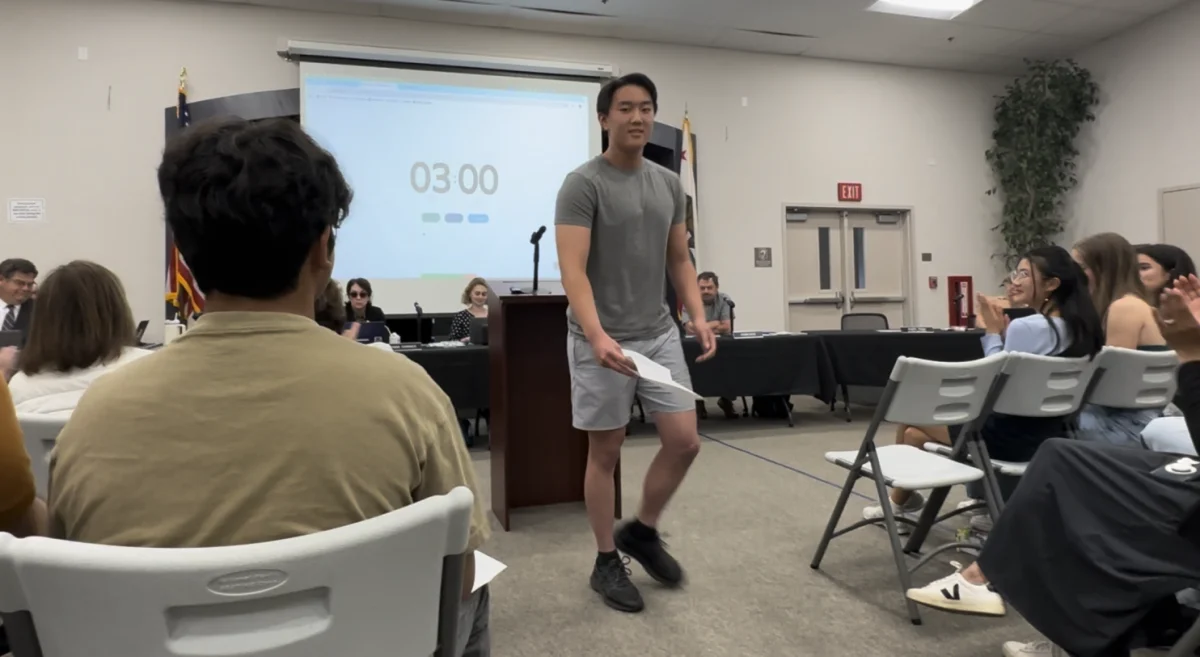During high school, students often choose to take many courses online or outside of school—for example, many take health online through Brigham Young University, while others take courses at the nearby School for Independent Learners (SIL). Yet one potential course is often overlooked–or rather, has never been taken by a student at this school: online physical education.
The seemingly contradictory name of “online physical education” is enough to raise numerous questions, namely the following: Can physical education even be taken online? Are classes legitimate? Would students actually exercise, or would they just sit there and read or watch videos?
In fact, online P.E. is not only a legitimate course but is also widely used throughout the nation. Online P.E. is one of the most popular courses at the Florida Virtual School, which is widely used in Florida due to its free offering of courses to all K-12 students in the state. However, online P.E. has been relatively unknown to California high schools because it wasn’t permitted by the state until recently. According to the Shape of the Nation Report on the status of physical education in America, conducted by the National Association for Sports and Physical Education (NASPE) and the American Heart Association (AHA), California allowed “required physical education credits to be earned through online physical education courses” in 2012, but not in 2010.
The general lack of information about online P.E. means that the administration has not received many requests for it to be allowed as an option.
“Online P.E. has never come up, so we have never discussed it,” Assistant Principal Perla Pasallo said.
Pasallo said that if online P.E. were to be allowed, the course would first have to go through the district’s assistant superintendent of curriculum.
Online P.E. should be allowed due to the many benefits it would bring to students. The website of Carone Fitness, an online institution offering P.E., states that online P.E. allows students to “tailor the frequency, intensity, time and type of their workouts to fit their schedule and fitness level.” Online P.E. is not only more convenient than regular P.E. classes, but can greatly benefit students who want to take more classes at school and do not have space in their current schedule, or need more free periods to handle their schoolwork throughout the week.
Because of the online nature of the course, students can also have a more personalized curriculum. They can practice in a non-competitive environment, receive personalized feedback and watch multimedia lessons as many times as they need to. Online P.E. also offers more extensive resources, such as online fitness journaling, nutrition tracking and health assessments.
One potential argument against online P.E. is that students would not actually complete the exercises. This worry would be negated if the administration restricted students to taking courses only from accredited institutions, which require verification of real exercise. For example, students could use Carone Fitness, which is an online institution accredited by the AdvancED/Northwest Accreditation Commission. They could also use BYU Independent Study (the same institution from which students can get credits for health courses), which is accredited by both the Northwest Accreditation Commission and the Northwest Commission on Colleges and Universities.
The accredited programs often include signed fitness logs, video and photo submissions, and other forms of verification. For example, courses such as Carone Fitness requires students to submit not only detailed fitness logs, but also videos and photos of themselves to demonstrate their use of technique. This requirement not only guarantees that students receive personalized feedback from the instructor, but that students must legitimately complete the activity. Courses such as Carone Fitness also require external verification such as “a supervising adult or online-synced hardware.” The district could require students to choose courses similar to those from Carone Fitness, which require MOVband wrist-worn activity monitors. The monitor “records all movement and syncs activity with an online account” that Carone Fitness instructors monitor. Other courses require Polar Heart Rate Monitors, devices that measure heart rate and sync to the online Carone Fitness account, which instructors also monitor. Although it is impossible to fully eliminate the possibility that students may not always complete the activities, the use of the monitors, coupled with the video and photo submissions and parent sign-off sheets, almost entirely guarantees that students will have to exercise.
Online physical education is also not necessarily easier than P.E. taken at school. Simply because students do not have to go to a regular class at school does not mean that students can slack off at home. A piece by the Minnesota Public Radio quoted an online P.E. student, who described the “double standard” in that “online students have to do everything, no matter how long it takes. Regular gym class students have to do whatever they can during that 52-minute class.”
A potential concern is that with online P.E., students cannot gain the benefits of teamwork that they gain through regular P.E. classes. While this is true, the concept of teamwork is not limited solely to physical education, and students can gain that through other activities in school. It is also true that because some online P.E. courses focus on a single subject such as running or strength training, students may be limited from learning the multiple sports in a regular P.E. curriculum. However, by being able to pick a P.E. course with a subject of their choice, students are more likely to enjoy a course and continue practicing even after the P.E. class has ended.
The administration should approve of online P.E. as an option for students so that students can take advantage of the multiple benefits that online P.E. offers. The end goal, after all, is for students to learn how to lead a healthy lifestyle—and the convenience and personalization of online P.E. make that goal easier to fulfill.








